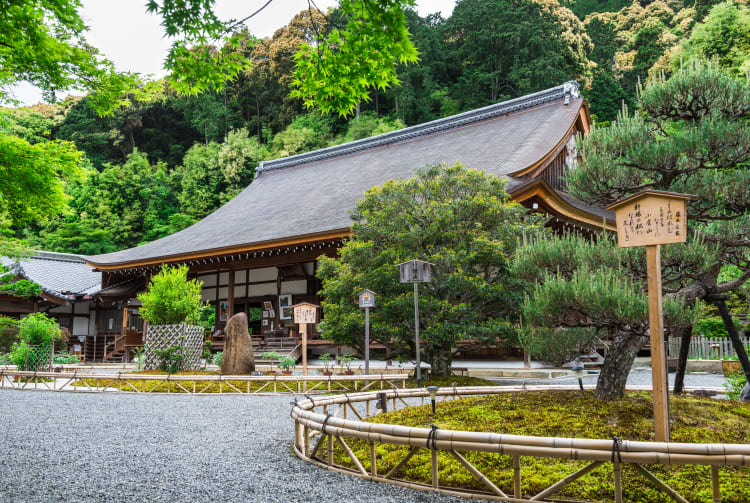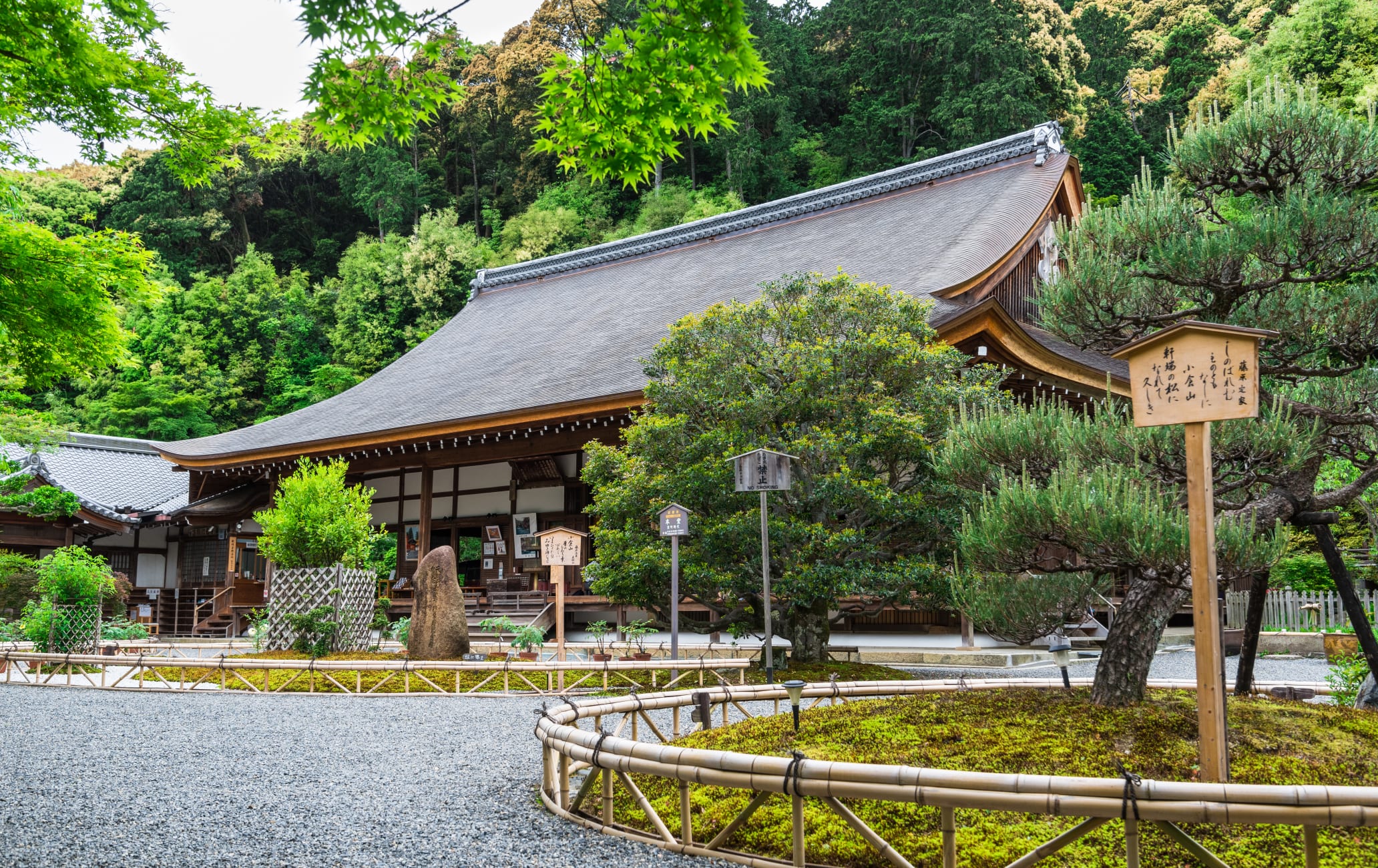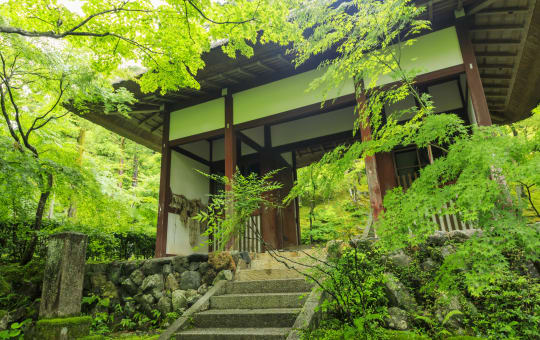Twin Buddhas greet travelers at this Heian period temple
Built between 834 and 847 in the Heian period, Nisonin Temple was established as the official temple of Emperor Saga. The temple burned down during the Onin War (1467-77), but some of its buildings were reconstructed, including the main hall and the Chokushi-mon gate.
Don't Miss
- The temple's Bell of Happiness, meant to be rung three times: for being alive, for the lives of those around you, and for all humanity
- The Misono-tei Tea Room, open only in spring and autumn
Quick Facts
The large number of graves of court nobles indicates the prestige of the temple
The temple and Mt. Kokura beyond have long been known for their beautiful autumn foliage
How to Get There
You can reach the temple by train followed by a walk or taxi ride.
Nisonin Temple is a 10-minute walk from either JR Saga-Arashiyama Station or Arashiyama Station on the Keifuku Line. From Hankyu Arashiyama Station, it takes around 30 minutes.
Two statues of eternal importance
The name Nisonin, meaning “two revered images,” derives from the temple's two principal standing images, Shaka Nyorai and Amitabha Tathagata. Both are designated as Important Cultural Assets of Japan. The statues have subtle differences, such as the shape of their fingers, which are infused with religious meaning.
The two images are here because Shaka Nyorai sends those who've died from this life to the afterlife, while Amitabha Tathagata welcomes them into the Pure Land (Buddhist heaven).
An age-old syncretic temple
Nisonin was originally a place to study all four Buddhist sects—Tendai, Shingon, Risshu and Jodo—but it has strictly been a Tendai temple since the Meiji period.
The resting place of nobility
The large number of graves of emperors and court nobles (the second-highest class after the imperial family in Heian period society) demonstrates the prestige of the temple.


























































